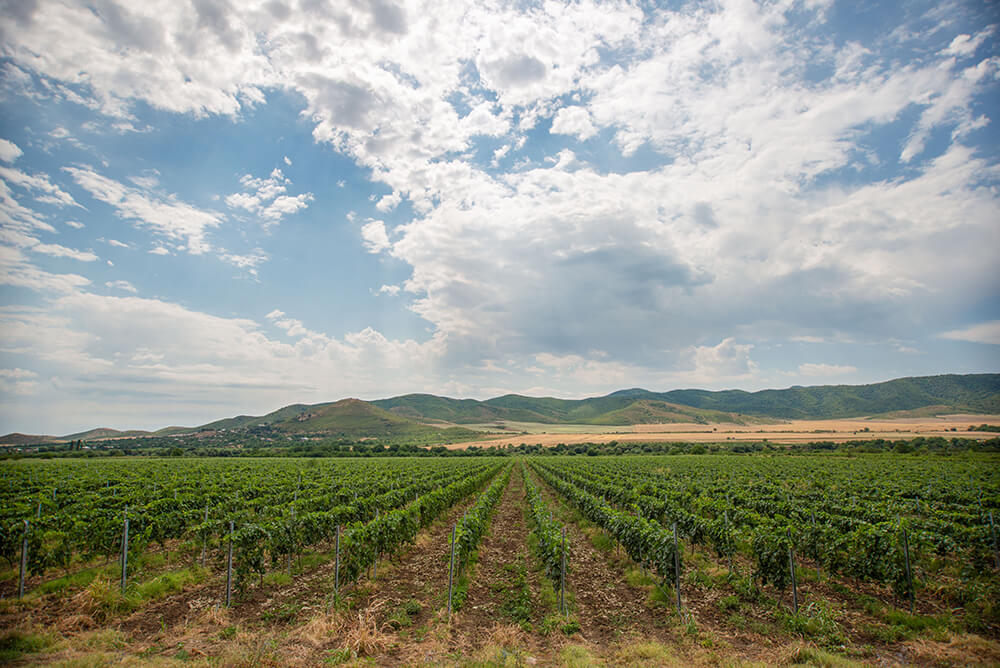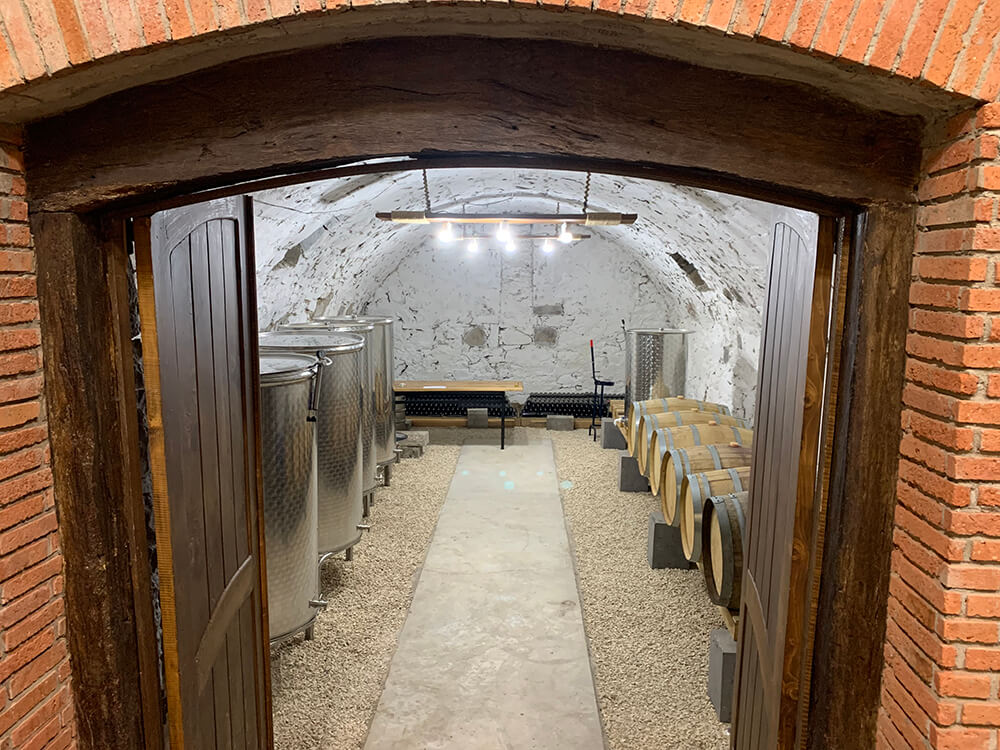Giorgi Khmelidze – a young winemaker from Bolnisi, creating modern wines based on Georgian-German traditions.
Giorgi planted these Saperavi and Shavkapito vineyards in the village of Kvemo Bolnisi, in Poladauri valley a couple of years ago. Various scriptures and numerous archaeological discoveries, such as qvevri fragments, wine cups, and ritual bowls, prove that this region has a long history of winemaking. Bolnisi microzone is located in the Southern part of Kvemo Kartli, 570 meters above sea level. Diversity of soils, moderately cold winters, and hot summers make this region ideal for grape varieties such as Rkatsiteli, Chinuri, Goruli Mtsvane, Saperavi, Tavkveri, Shavkapito or Asuretuli Shala. The location, climate, and diversity of soil are what contribute to the unique organoleptic features of Bolnisi wines.

Bolnisi has had an interesting streak of development in the last couple of years: grape varieties on the verge of extinction were saved and are now planted in new vineyards. Wineries that once belonged to Schwab colonists are seeing new wines being made. In 2019, “Bolnisi” was registered as a Protected Designation of Origin (PDO).
There are dozens of wineries here, including Giorgi Khmelidze’s – a young winemaker whose wines are already generating buzz among wine professionals. At WinExpo 2021 last year, Khmelo Winery 2019 Rkatsiteli won gold, the 2020 Rkatsiteli won silver, and the 2019 Saperavi won bronze medals.



Giorgi Khmelidze has maintained the tradition of making wine in casks, along with other German influences. The winemaker tells us that he followed his family tradition and kept using casks left by the Germans, when he started making wine himself: “Making wine in casks is part of Bolnisi history. I wanted to preserve this history and be true to our family traditions. We make our wine in casks, which is transferred to French oak barrels after the fermentation for ageing. As a result, the wine comes out velvety, mild, with pleasant notes of the oak barrel”.


Giorgi has been actively involved in winemaking for a couple of years now, even though his involvement in viticulture started long before that, in his grandfather’s half a hectare of vineyard. It was his grandfather’s warmth and appreciation towards the vineyard that inspired Giorgi to start planting the vineyard in 2017, on the land owned by the family and used for growing various cultures. He says that the support from the government as well as the Bolnisi community played a crucial role in the process. He first planted Saperavi and Shavkapito varieties on 6.5 hectares, which he doubled in 2019-2020. Today, he cares for 13-hectare vineyards of Saperavi, Rkatiseli, Shavkapito, and Tavkveri. He plans to add 8 more hectares of land, where he wants to plant white grape varieties, increasing the volume of Rkatsiteli. Giorgi says that Rkatsiteli grown in the Bolnisi region has a more intense aromatic profile, and compared to wine made from Rkatsiteli grown in other regions, local Rkatsiteli wine is different by style, and taste characteristics.
“Besides Rkatsiteli, I plan to test other varieties, such as Goruli Mtsvane, Chinuri, and Kisi. Incidentally, there is a small volume of Kisi in Bolnisi. Considering the local climate, I think it will yield great results. As an experiment, I will only plant it and Goruli Mtsvane on one hectare. I am also actively thinking about Chinuri, which demonstrated exceptional characteristics in Bolnisi”.
Sensory characteristics of Bolnisi wines formed under the influence of terroir and revealed with varietal characteristics: dried tropical garden fruits, field flowers, green spices, dried leaves, hay, tea, and tobacco in white wines. In reds – aromas of cherry, red and black berries, delicate brown spices.

It is worth mentioning that a vast majority of Bolnisi wineries maintain their quality. Their wine is made using the philosophy of “minimal intervention”, which is in line with today’s demand of the international market. Giorgi Khmelidze follows this philosophy, outlining that the Bolnisi climate offers him the possibility to minimize the use of systemic chemicals.
Winemaker’s plans also include the increase of production and the construction of a new wine cellar: “Our German winery is small, so we will have to expand as the production increases. The current winery will be dedicated to maintaining the tradition of making wine in casks, whereas the new one will be used for traditional qvevri winemaking, as well as adopting European winemaking methods. We will have many interesting innovations for the consumer: we couldn’t experiment much with current harvest volumes, but with the increase, we will have the opportunity to think about Rkatsiteli-Chinuri, Rkatsiteli-Chinuri-Goruli Mtsvane, and Shavkapito-Tavkveri coupage”.


Such is the story of a 31-year-old Bolnisi winemaker who only started with 1000 bottles of wine. Today, with 10,000 bottles he plans to position himself on local as well as several European markets, including Austria, Germany, and Poland. In only two years, Khmelo Winery will increase its production to 130,000 bottles.












